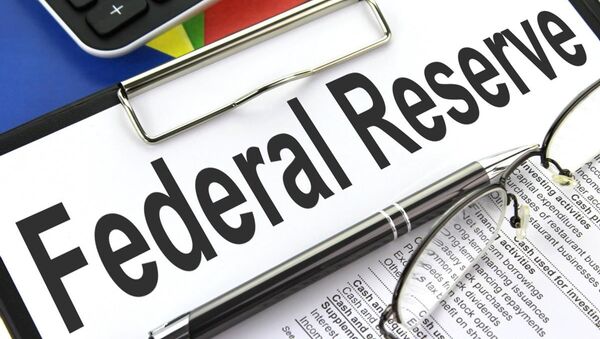India seems to be getting a humungous help from an unexpected quarter in its fight against the pandemic. At a time when the Indian economy has touched the trough with gross domestic product (GDP), contracting by 23.9 percent in April – June, the US Federal Reserve’s decision on interest rates seems to have come as a saviour.
Analysts and experts point out that with the US Federal Reserve’s recent indication that it will hold benchmark interest rates near “zero” for the next three years till 2023, it has come as a major leg up for the Indian economy.
They also opine it may expedite the Indian recovery post-pandemic.
Earlier, this March, the US Fed Reserve had lowered the rate to near zero as a combat measure against the pandemic.
Enumerating the impact of the near-zero interest rate on the Indian economy, a former RBI governor told Sputnik on condition of anonymity: “It is definitely positive and comes as a blessing in disguise for India.”
“With a low interest rate in the US and a higher interest rate in India, the interest rate differential increases, making India an attractive investment destination.”
“As a result, foreign institutional investors will borrow at cheaper rates in the US and invest in bonds in India to earn higher returns. A three-year period would provide a good window for investment in both Indian bonds and equity,” the former governor added.
Those tracking the financial markets closely also list out the other ways in which India stands to benefit from the Fed's decision.
Financial Journalist Geetu Moza told Sputnik: “With US rates near zero for three years, RBI is also expected to remain accommodative and the benchmark lending rates will remain on the lower side.”
“Lower rates, in turn, will help the corporates raise cheap money and make investments, thereby helping in economic recovery post the pandemic. Secondly, it will also help Indian currency strengthen against the dollar,” she added.
Moza also believes equity and debt markets in India will get a boost with foreign investors pouring cheap funds into India. “A cheap dollar will also help on repayment of India’s sovereign debt.”
To fight the disruption caused by the pandemic, the Indian government rolled out a $266 billion stimulus package. The RBI, in turn, has pumped in liquidity worth $125 billion since February this year to maintain stability in the financial markets amid the pandemic onslaught.
India also reduced the benchmark lending rates.
During the pandemic, the RBI reduced the benchmark lending rate -- the repo rate -- twice to boost growth.
However, in the last monetary policy statement announced on 6 August, the Monetary Policy Committee (MPC) under the RBI kept the rates unchanged owing to concerns on rising inflation.
Maintaining that the upside risks to food prices remain, the committee said, "The inflation outlook of non-food categories is, however, fraught with uncertainty. Higher domestic taxes on petroleum products have resulted in elevated domestic pump prices and will impart broad-based cost-push pressures going forward.”
“Volatility in financial markets and rising asset prices also pose upside risks to the outlook. Taking into consideration all these factors, headline inflation may remain elevated in July – September," it added.
The RBI has deferred the upcoming MPC announcement on key policy rates scheduled on 1 October since the committee lacked a quorum.
On its part, the Fed Reserve too engaged in a monetary firefight to tackle the impact of the pandemic. On 15 March, it cut the benchmark lending rate by a percent. It also purchased treasury bonds worth $700 billion and mortgage-backed securities to infuse liquidity in the financial markets.





